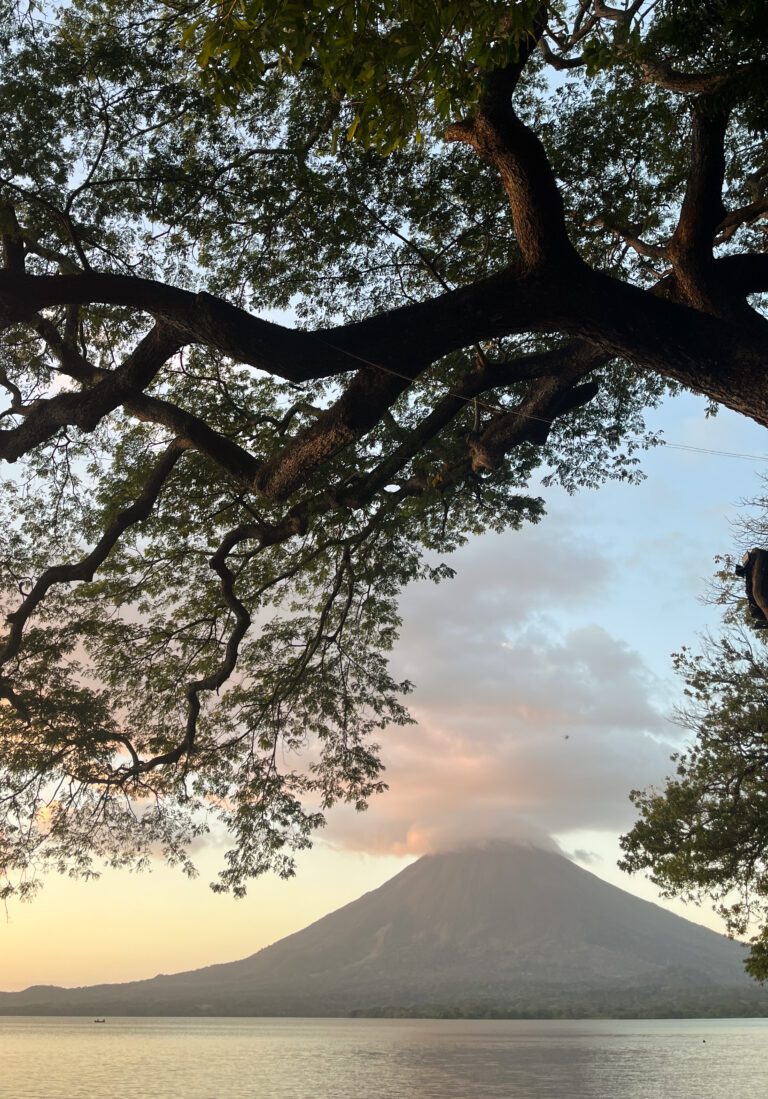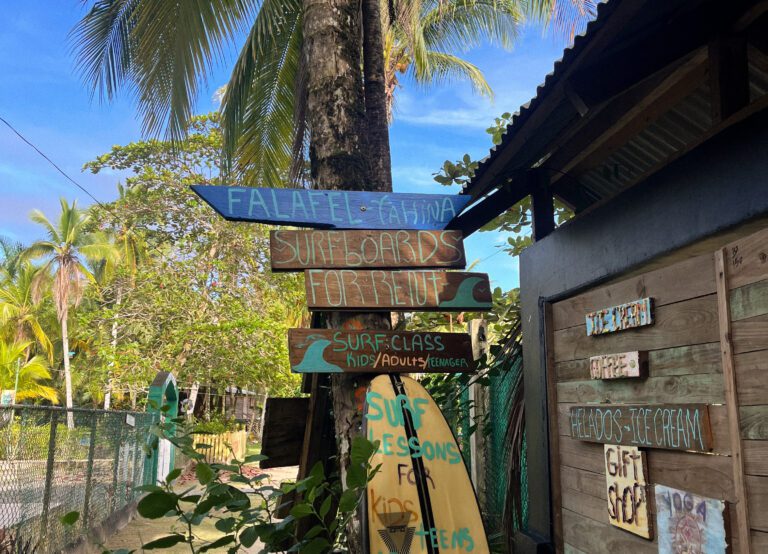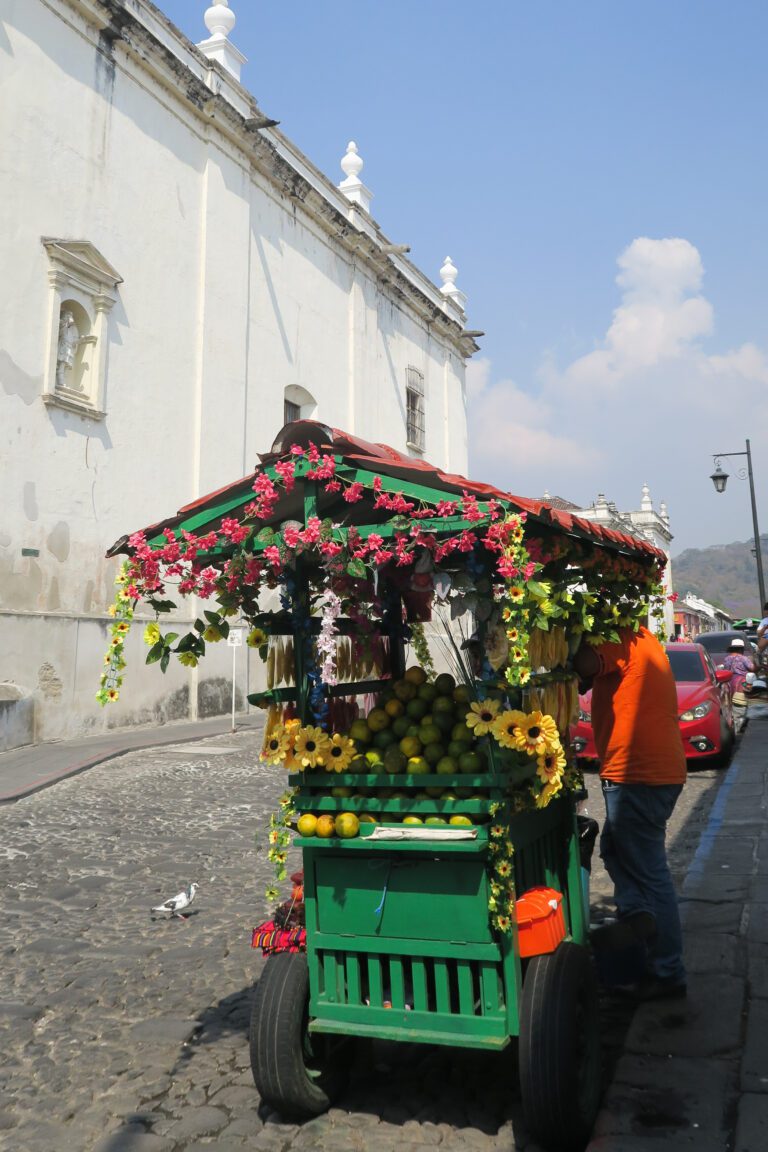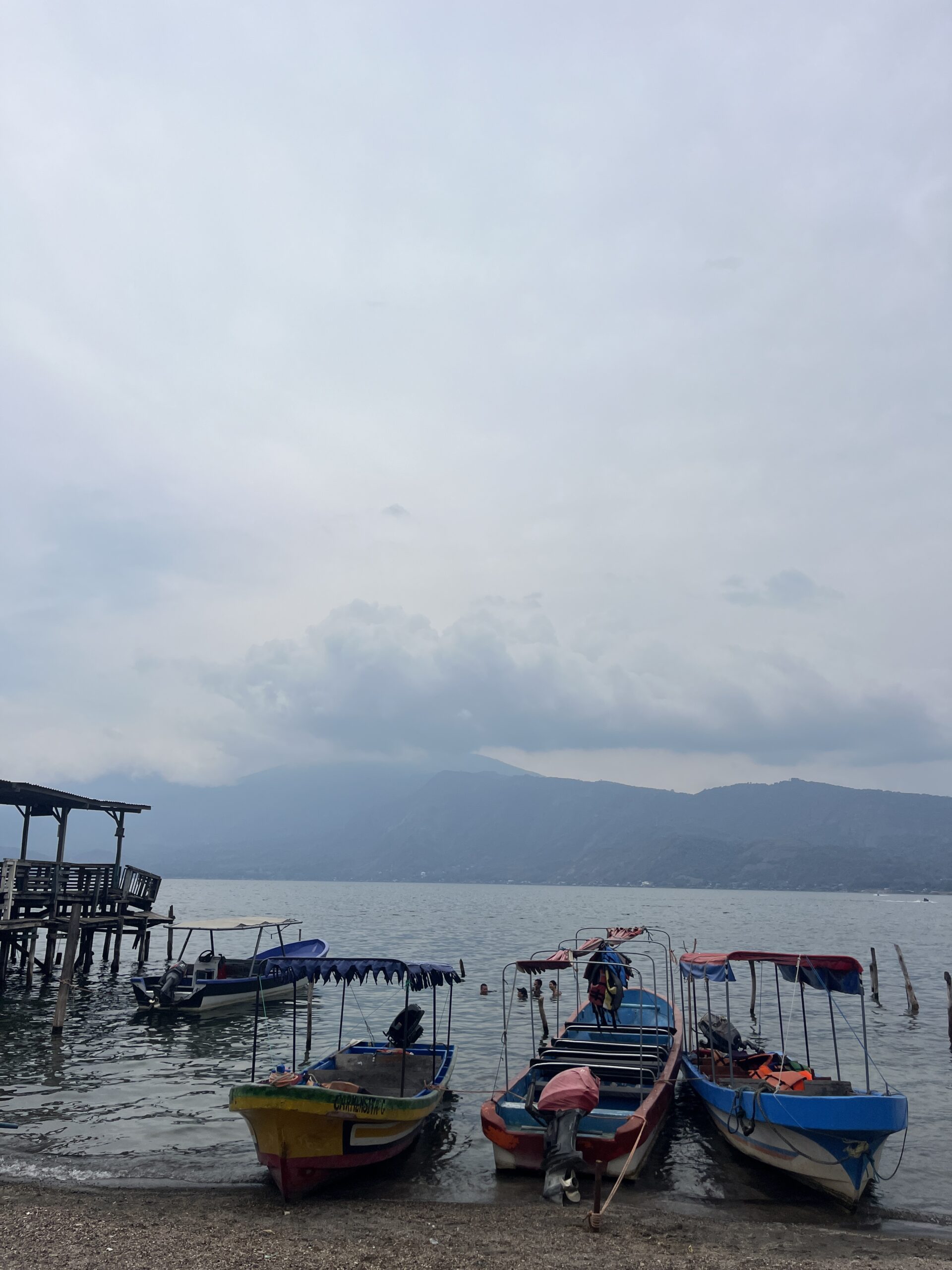
3-Week El Salvador Travel Itinerary
El Salvador is one of the top destinations for us in Central America. It’s very underrated, and the fact that many travelers skip it makes it more authentic and less touristy than its neighboring countries. It’s the smallest country in the region, but full of things to see and explore, from surf towns to volcanoes and cultural cities. For us, this became a top destination mostly because of the friendly people, the surf, and of course, the pupusas. In this El Salvador travel itinerary, you’ll find a full 3-week route that takes you through the highlights, from the capital to the coast, coffee towns, volcanoes, and lakes. You can easily adjust it for one or two weeks depending on your travel time. As well as the route listed below, note that we personally didn’t follow it in this exact order since we arrived from Nicaragua and entered El Salvador overland from the eastern side. So depending on where you’re coming from, Guatemala, Honduras, or Nicaragua, you can easily reverse or adjust the route to fit your trip.
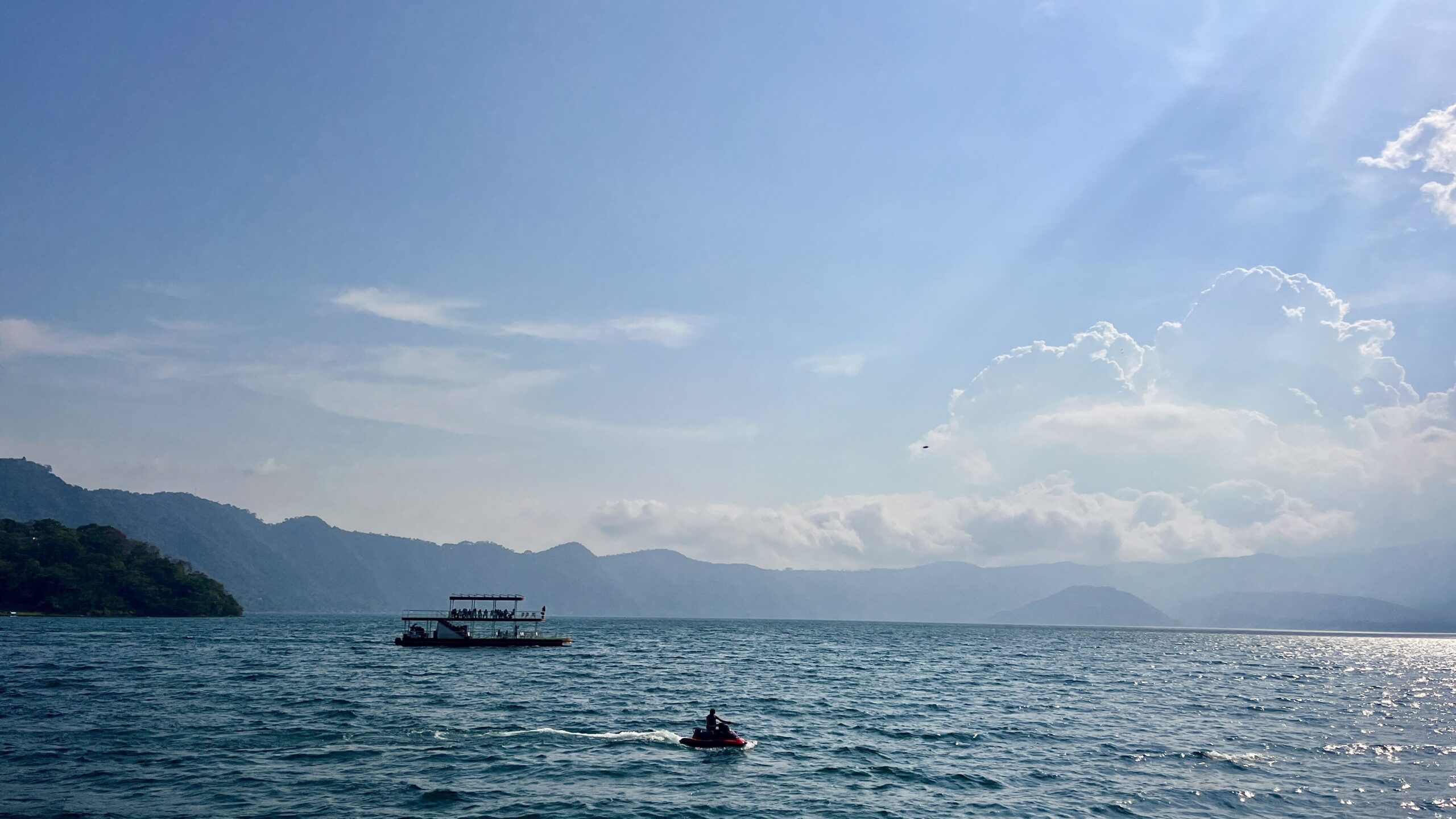
Just so you know: This post may contain affiliate links. That means we might earn a small commission if you book or buy something through the links – at no extra cost to you. It helps us keep sharing travel tips for budget adventures!
Check out our other Central America travel guides for more destinations and tips.
Why Visit El Salvador?
El Salvador is one of the most unvisited countries in Central America because of its previous history. However, in recent years, crime rates have dropped, new safety measures have been enforced, and tourism has grown. Still, it remains one of the least crowded and most authentic destinations in the Central America. Since it’s a small country, it’s easy to travel around and go from the ocean to the mountains in just a few hours. Even though it’s small, this El Salvador travel itinerary shows how much there is to explore, from the coast to the mountains and everything in between. The coast offers great surf and cute surf towns, while the inland have beautiful volcanos and small cities. If you are traveling the whole region, it’s also a natural stop between Nicaragua and Guatemala if you are going by land. Because of the history and not so much tourism, many locals are happy to see some tourism in the country and are happy to share and explain the culture. It offers a raw real travel experience that is getting hard to find in other places.
Week 1: San Salvador & The Pacific Coast
San Salvador (3 days)
If you fly directly into El Salvador, you’ll most likely begin your trip in the capital, San Salvador. Many travelers skip the city, but we really recommend including it in your El Salvador travel itinerary. San Salvador offers a mix of history, culture, and modern urban life, with plenty of nearby destinations perfect for day trips. A few days in the city gives you a chance to experience its energy and explore its main sights and neighborhoods. Spend one or two full days in the city, and one day for a nearby day trip.
Things To Do In San Salvador:
- Historic Downtown: Start in the city center where you’ll find the National Palace, Metropolitan Cathedral, and Teatro Nacional. These landmarks are all close to each other and easy to explore on foot. The area is full of markets, street vendors, and daily life. You can also join a guided walking tour to learn about the city’s history and architecture.
- Museo Nacional de Antropología (MUNA): One of El Salvador’s top museums, offering insight into indigenous cultures and pre-Columbian history. It’s the perfect starting point before visiting archaeological sites like Joya de Cerén or Tazumal.
- Joya de Cerén Archaeological Site: A UNESCO World Heritage Site known as the Pompeii of the Americas. This ancient Mayan village was preserved under volcanic ash over 1,000 years ago. Located about 30 minutes from San Salvador, it can be easily combined with nearby sites like San Andrés.
- San Salvador Volcano (El Boquerón National Park): Just outside the city, El Boquerón offer short, easy trails around the massive crater of the San Salvador Volcano. Several cafés near the park offer great views and guided tours often include scenic stops or coffee farm visits.
- Zona Rosa: San Salvador’s modern district, known for restaurants, cafés, rooftop bars, and nightlife. It’s considered one of the safer areas of the city and ideal for dining or relaxing after sightseeing.
Where To Stay:
- Hostal Cumbres del Volcán: Budget-friendly, central location.
- La Zona Hostel: Great for backpackers and solo travelers.

El Tunco & La Libertad (4 days)
After exploring the capital, head to the coast. El Tunco and La Libertad are about 1–1.5 hours from San Salvador and are perfect for surfing, relaxing and sightseeing. This part of your El Salvador itinerary focuses on beaches, surfing, and sunsets. The Pacific Coast is one of the main reasons many travelers fall in love with the country. Even though El Tunco didn’t feel very authentic to us and can seem like a closed-off community, it’s still a great spot for surfing and relaxing. The waves are excellent and despite its quirks, we’d still recommend it as a must-see stop.
Things To Do In El Tunco:
- Surf: El Tunco is also called the surf city. This places if great for surf, both for beginners and advanced surfers. You can rent boards and lessons right by the beach. Remember to have respect for the locals and other surfers in the water and make sure to learn the basic rules before heading out.
- Sunset on the beach: The sunsets in El Tunco are incredible. Many people gather by the rocks each evening to watch the sky do its magic.
- Explore the town: El Tunco is small but has a few nice cafés, stands, and bars. It’s a nice place to walk around without any set plan and do some shopping.
Things To Do In La Libertad:
- La Libertad Pier & Fish Market: Visit the pier to see fishermen selling fresh seafood and try a plate of ceviche.
- Day trips to nearby beaches: Visit El Zonte, Mizata, or Playa San Blas. Many hostels organize surf trips and transport.
Where To Stay:
- Palo Verde Sustainable Hotel: Oceanfront and eco-friendly.
- Tunco Lodge: Mid-range, quiet, with a pool.
- Papaya Lodge: Budget option, social and central.
You can stay in El Tunco and take short trips along the coast, or split a few nights between beaches if you prefer quieter areas.
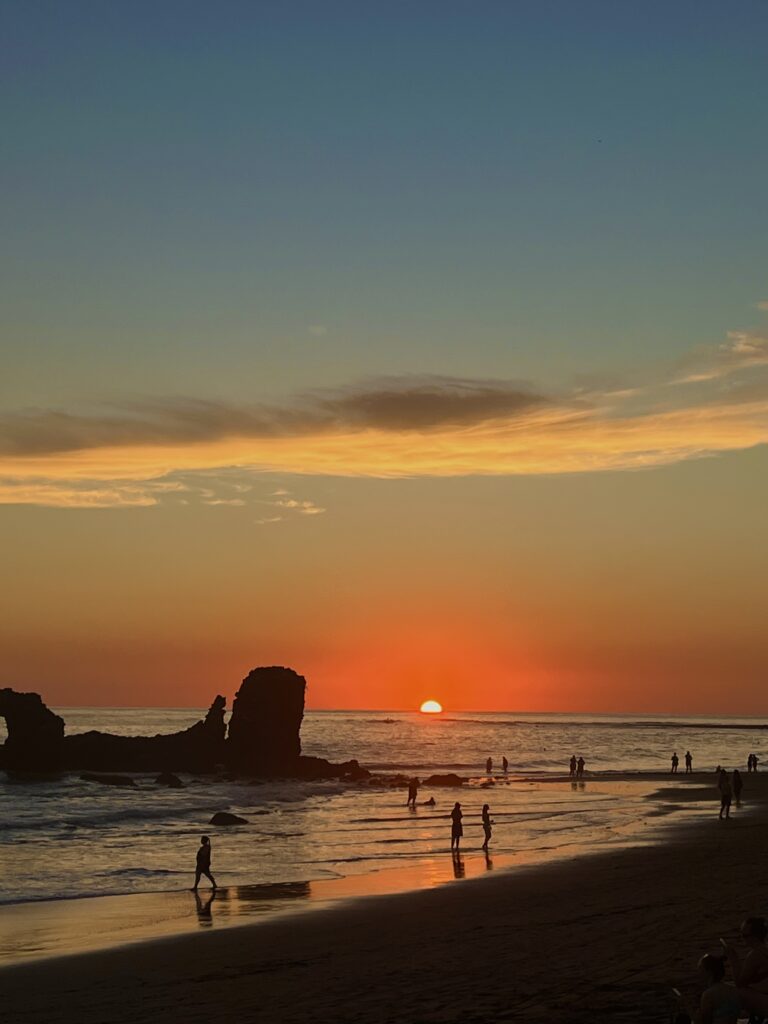
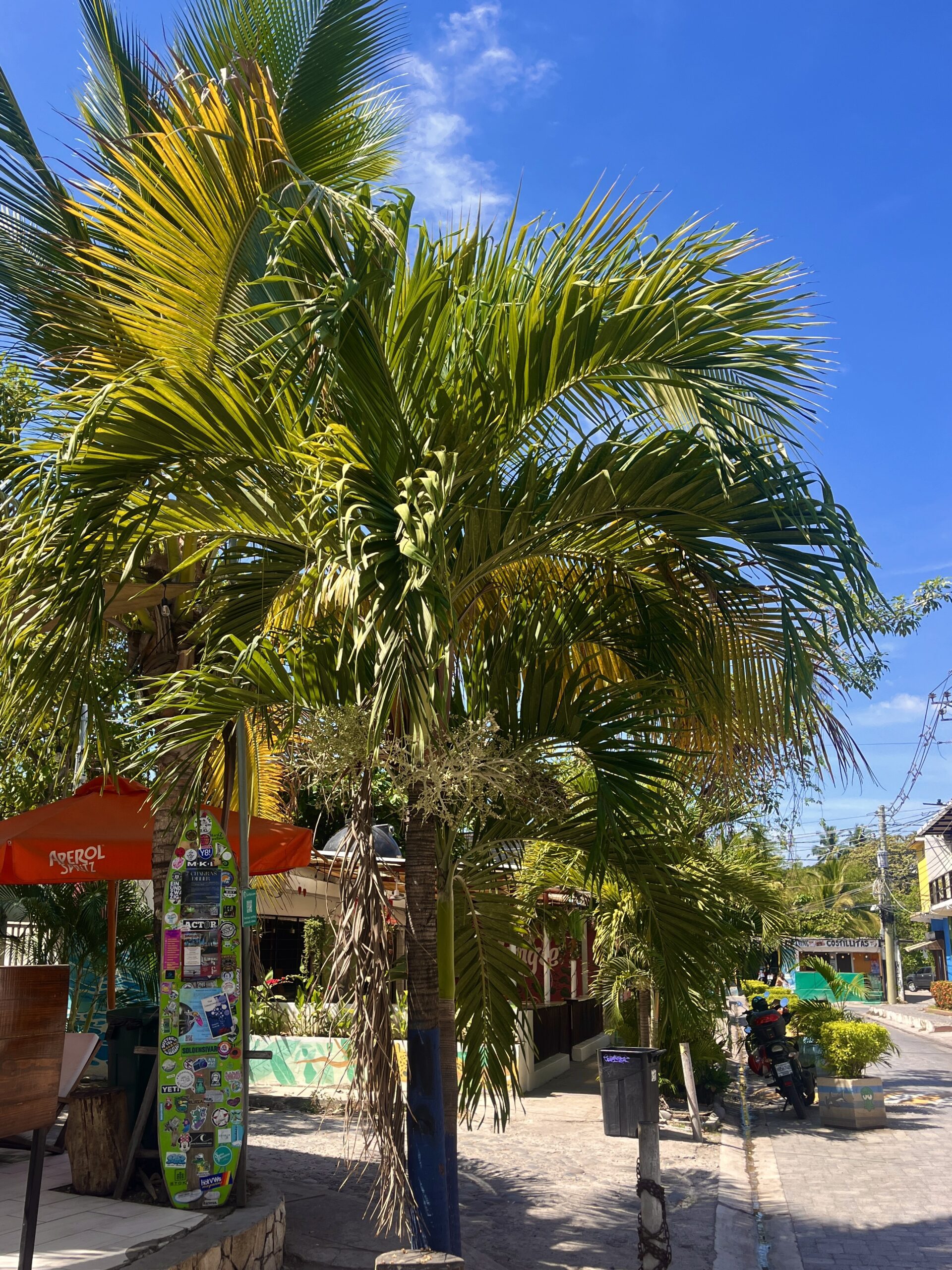
Week 2: Ruta de las Flores & Santa Ana
Ruta de las Flores (4 days)
After the coast, the next stop in this El Salvador travel itinerary takes you inland to the mountains along the Ruta de las Flores. The Ruta de las Flores is a area in western El Salvador known for its small colonial towns, weekend festivals and coffee farms. The name of this area is because of the flowers that bloom along the roads, mostly between November and February. This route you can either do it by yourself by renting a bike and drive between the places or you can do it with a tour.
Things To Do:
- Juayúa Food Festival: Every weekend, Juayúa hosts a food market where locals cook traditional dishes and sell street food. It’s one of the best culinary stops on this El Salvador itinerary.
- Coffee tours: Visit one of the local coffee farms in Apaneca or Ataco to learn about the growing and roasting process.
- Ataco murals: The town of Ataco is famous for colorful murals, small art galleries, and cozy coffee shops.
- Waterfall hikes: Join a guided tour to Los Chorros de la Calera or 7 Waterfalls around Juayúa. Many hostels also have guided tours for this.
- Café Albania: A fun stop for activities like the rainbow slide, zipline, or giant swing.
Where To Stay:
- Que Ondas Hostal (Juayúa): Budget hostel with shared kitchen.
- Hotel & Café Entre Pinos (Apaneca): Comfortable, mountain setting.
- Hostal Las Flores de Ataco (Ataco): Local-style guesthouse, central location.
You can base yourself in Juayúa or Ataco and explore the area with day trips. Distances are short, and local buses run frequently between towns.
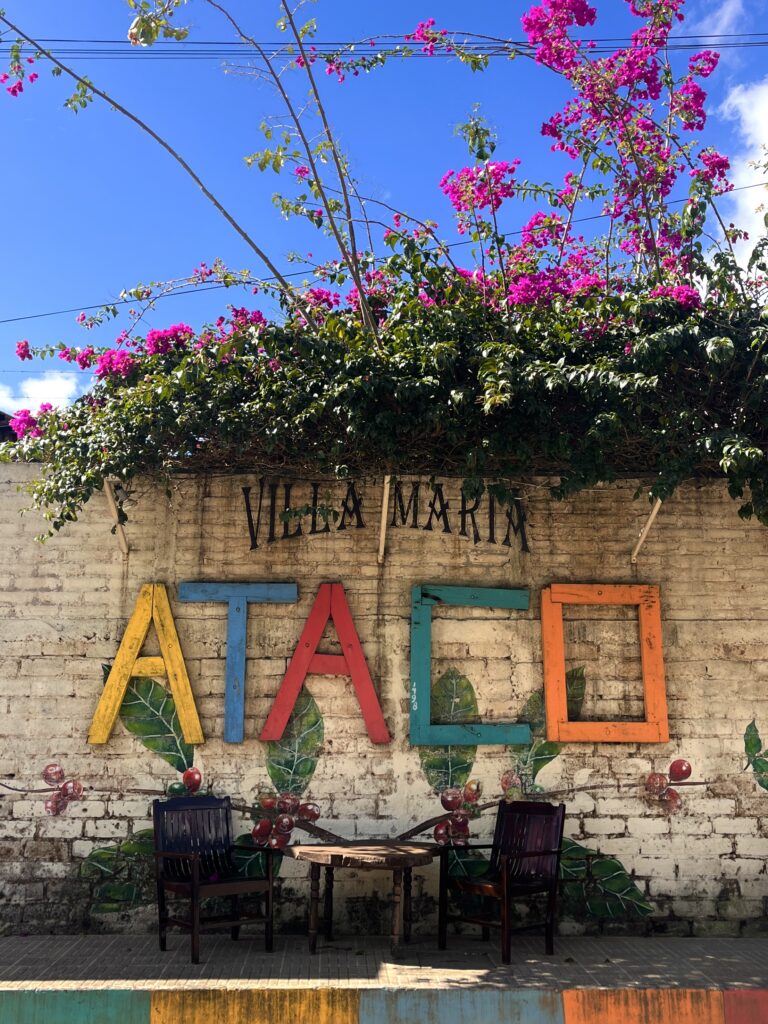

Santa Ana (3 days)
Santa Ana is the second largest city in El Salvador and a key stop in this itinerary. There is many things both in and around Santa Ana to explore such as volcano hikes, lakes and ruins.
Things To Do:
- Santa Ana Volcano (Ilamatepec): Beautiful crater lake with views over Izalco Volcano and Lake Coatepeque. The hike takes around 4 hours in total and can be done independently with a park ranger or as part of an tour.
- Lake Coatepeque: 30 minutes from the city. You can either go here during a day or stay longer in order to explore more.
- Santa Ana Cathedral & Central Park: The Neo-Gothic cathedral overlooks the Central Park, with the Municipal Palace nearby. It’s an easy, scenic walk through the city’s historic heart. You can book a walking tour here.
- Tazumal ruins: Located in Chalchuapa, about 30 minutes away. These Mayan ruins are among the most significant in El Salvador and can be visited as a half-day trip. Make sure to also try the “yuca con chicharron” that is a popular dish around these areas.
Where To Stay:
- Casa Verde Hostel: One of the most recommended hostels in the country. Clean, safe, and social.
- Hostal Las Puertas: Quiet, budget-friendly option.
- Hotel Remfort: Affordable hotel close to the center.
The first time we visited Santa Ana we ended up staying for a full week because of the amazing people we met and the vibe of the city. Even though you might not want to stay for a full week, we would still advice to spend minimum two full days so you get to discover the city as well as some nearby places.
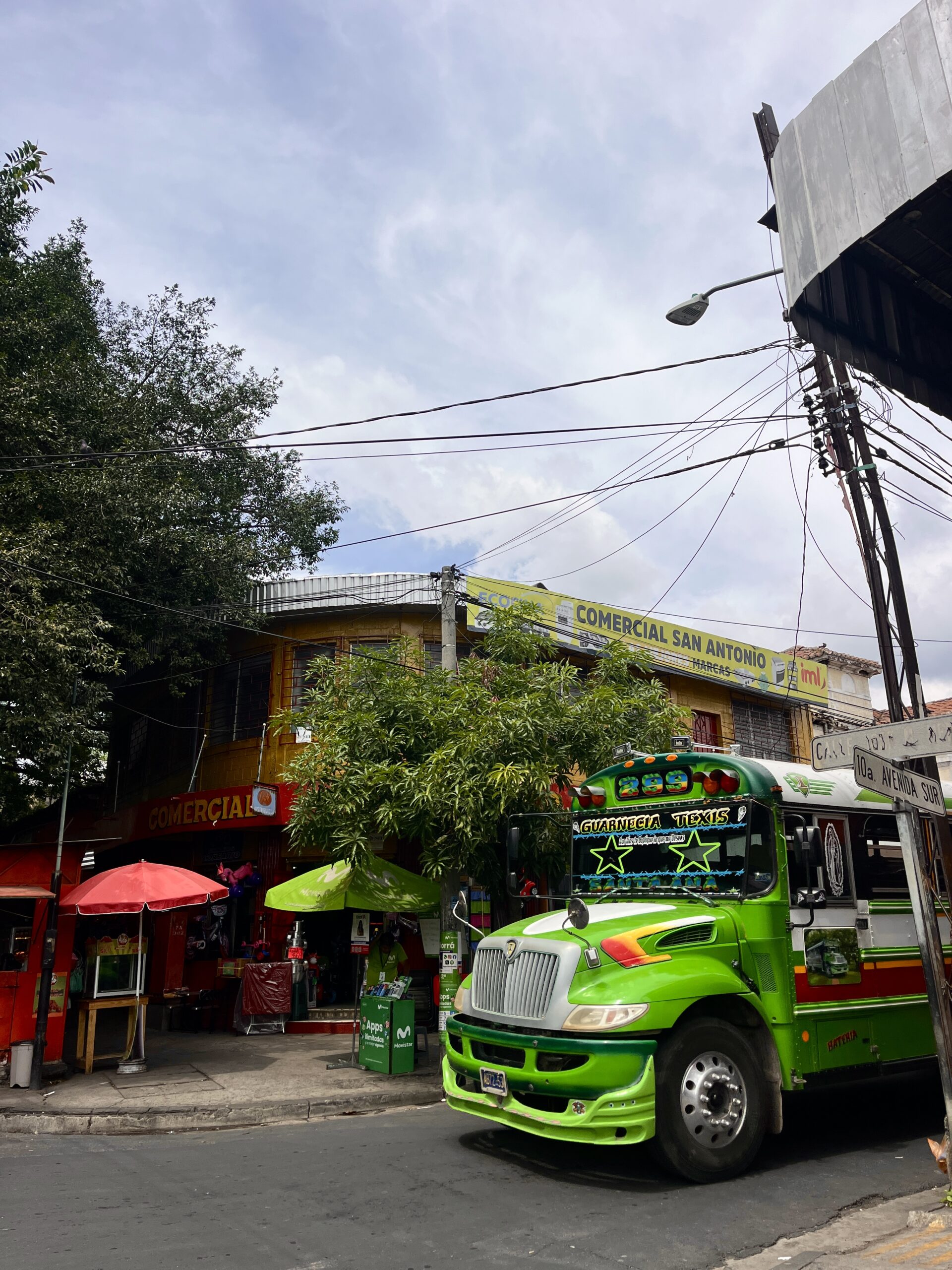

Week 3: Lake Coatepeque & Suchitoto
Lake Coatepeque (2 days)
If you didn’t visit Lake Coatepeque from Santa Ana, include it in your El Salvador travel itinerary for one or two nights to be able to explore the lake and relax before ending your trip. Lake Coatepeque is one of the most beautiful places in El Salvador and a peaceful break from the busier parts of the itinerary.
Things To Do:
- Swim or kayak on the lake.
- Eat at a lakeside restaurant and enjoy the views.
- Watch the sunset.
Where To Stay:
- Captain Morgan Hostel: Social, with direct lake access.
- Rancho Alegre: Local guesthouse, good for couples or groups.

Suchitoto (2–3 days)
Suchitoto is one of the most cultural towns in El Salvador and a great final stop on this itinerary. The streets are cobblestoned, the architecture is colonial, and the pace is slow.
Things To Do:
- Walk around the town, visit art galleries, and sit in cafés on the main square.
- Take a boat trip on Lago Suchitlán, a large lake with birdwatching and small islands.
- Visit Cascada Los Tercios, a short ride from town.
- Learn indigo dyeing, a traditional craft in this area. Some local workshops offer short classes where you can dye your own fabric.
- If you’re visiting on a weekend, check for markets and live music around the plaza.
Where To Stay:
- Hostal Casa del Sol: Great hostel located a few minutes walk from the central plaza.
- Hotel Los Almendros de San Lorenzo: Restored colonial house with pool.
- Casa Hotel Santa Lucia: Good location affordable option.
Extra Destinations To Add To Your El Salvador Itinerary
If you have extra time or want to extend your El Salvador itinerary, consider adding a few of these spots:
- El Cuco Beach: A long, quiet beach on the eastern coast, ideal if you want more time by the ocean.
- Perquín: A mountain town in the Morazán region, known for history and nature trails.
- Joya de Cerén: If you skipped it earlier, this UNESCO site is worth a stop for anyone interested in archaeology.
Food To Try In El Salvador
- Pupusas: The national dish of El Salvador and a must-try! Corn tortillas stuffed with fillings like cheese, beans, or pork (chicharrón), then grilled and served with curtido (fermented cabbage slaw) and tomato salsa.
- Yuca con Chicharrón: Popular traditional dish made with fried yuca (cassava) topped with crispy pork, pickled cabbage, and tomato sauce. You’ll often find it at markets or local food stalls.
- Tortas: Salvadoran-style sandwiches filled with meat (often chicken or beef), avocado, tomatoes, and mayo, all packed into soft bread. El Salvador definitely knows their tortas.
- Tamales: Wrapped in banana leaves instead of corn husks, Salvadoran tamales are softer and often filled with chicken, vegetables, or beans.

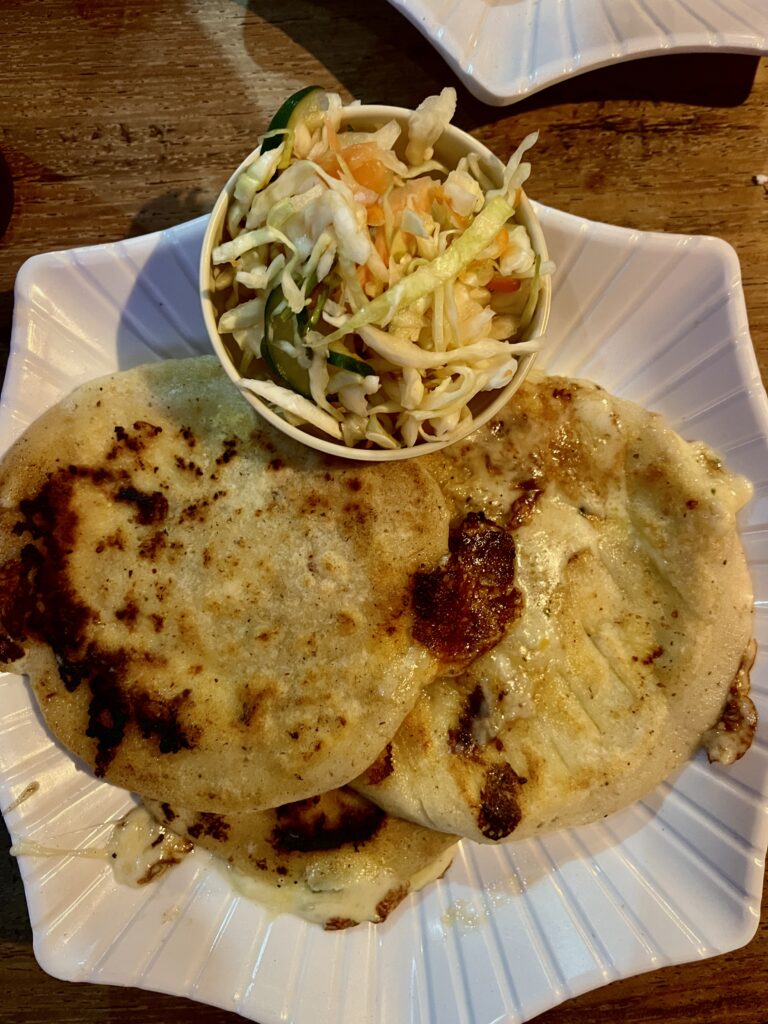
Travel Tips for El Salvador
Best time to visit:
The dry season runs from November to April and is the best time to visit. Between May and October is the rainy season which brings some short afternoon rain but which also result in greener landscape.
Transport:
Buses are cheap and connect all major towns. However, for longer distances, or if you just want to save time, shared shuttles is also a good option.
Safety:
El Salvador has become safer in recent years, especially for tourists. Use normal travel precautions, don’t walk alone at night, know which areas to avoid and use official taxis or rideshare apps.
Currency:
U.S. dollars are used everywhere. ATMs are available in all cities and most towns.
Language:
Spanish is the main language. Knowing a few basic phrases helps a lot, especially in smaller towns.
Budget:
Backpackers can travel on around $35–50 USD per day, mid-range travelers around $60–100 USD, depending on accommodation and tours.
Suggested Route Overview
Week 1: San Salvador → El Tunco / La Libertad
Week 2: Ruta de las Flores → Santa Ana
Week 3: Lake Coatepeque → Suchitoto → Return to San Salvador
You can travel this route clockwise or in reverse depending on flights and starting point.
Final Thoughts
El Salvador surprised us in every way. It’s small, easy to get around, and has much more to offer than most people expect. Within a few hours, you can go from hiking volcanoes to relaxing at the beach or exploring coffee towns. The country feels real and welcoming. You don’t need a big budget or strict plan, just time to explore. The people are kind, the food is great, and there’s a genuine charm that’s hard to find elsewhere in Central America.
If you’re looking for a destination that’s affordable, diverse, and still off the main tourist path, this El Salvador travel itinerary gives you the best mix of nature, culture, and local life. It’s a country that will surprise you for all the right reasons and one you’ll probably end up recommending to others.


